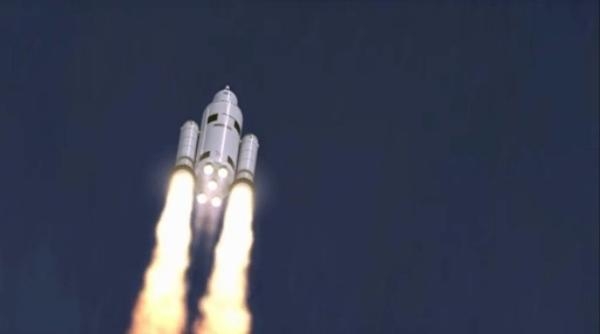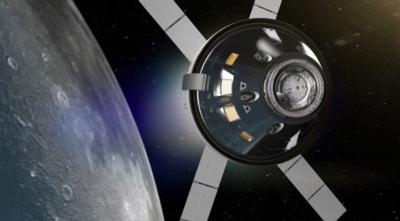Thu, Mar 09, 2017
Directs Agency To Pursue A 'Balanced Portfolio' Of Activities
The U.S. House of Representatives on Tuesday approved the National Aeronautics and Space Administration Transition Authorization Act of 2017 (S.442), which cleared the Senate last month. This bipartisan, bicameral legislation reaffirms Congress’ commitment to NASA, and directs the agency to pursue a balanced portfolio of activities.

"The NASA Transition Authorization Act of 2017 reaffirms our support for the bold visions and commitments that will shape America’s future in space," said House Science Committe chair Lamar Smith (R-TX). "This bill reiterates the importance of maintaining NASA’s continuity of purpose to ensure America remains a leader in space exploration. It also directs NASA to create a roadmap for human exploration and guides the future path of exploration for decades to come. With the passage of this bill, we take another step in making America great again. ”
"The NASA Transition Authorization Act of 2017 is a bipartisan and bicameral bill that creates certainty and long-term stability for NASA and America’s human space flight programs," said pace Subcommittee Chairman Brian Babin (R-TX). "The bill continues support for the International Space Station, the Space Launch System, the Orion crew vehicle, and the commercial cargo and crew programs. Its passage puts NASA and America on a clear path forward into the next chapter of space exploration. I am also pleased to note the inclusion of the TREAT Astronauts Act, legislation that I introduced to ensure that our nation’s astronauts receive support for medical issues associated with their service while also advancing research in long-term space missions.”

The NASA Transition Authorization Act of 2017 authorizes the House’s proposed Fiscal Year 2017 funding level of $19.5 billion. The bill maintains support for the James Webb Space Telescope, the Space Launch System, the Orion crew vehicle, the International Space Station, and the commercial crew and cargo programs. The bill makes the determination that the technological and scientific goals of the Asteroid Robotic Redirect Mission have not been demonstrated, and requires a report on alternatives to demonstrate the technologies needed for a human mission to Mars.
The NASA Transition Authorization Act also supports NASA’s Mars 2020 rover, the Wide-Field Infrared Survey Telescope, as well as direction for a mission to Europa. It directs the NASA administrator to seek reimbursement whenever responsibilities are transferred to NASA from another agency or when NASA funds another agency’s activities. It also includes the TREAT Astronauts Act, which gives NASA the ability to care for our astronauts and enhance our understanding of the effects of spaceflight on the human body.
(Source: House Science Committee news release)
More News
Aero Linx: International Federation of Airworthiness (IFA) We aim to be the most internationally respected independent authority on the subject of Airworthiness. IFA uniquely combi>[...]
Ultrahigh Frequency (UHF) The frequency band between 300 and 3,000 MHz. The bank of radio frequencies used for military air/ground voice communications. In some instances this may >[...]
A Few Questions AND Answers To Help You Get MORE Out of ANN! 1) I forgot my password. How do I find it? 1) Easy... click here and give us your e-mail address--we'll send it to you >[...]
From 2019 (YouTube Edition): Learning To Paint Without Getting Any On Your Hands PPG's Aerospace Coatings Academy is a tool designed to teach everything one needs to know about all>[...]
Also: Sustainable Aircraft Test Put Aside, More Falcon 9 Ops, Wyoming ANG Rescue, Oreo Cookie Into Orbit Joby Aviation has reason to celebrate, recently completing its first full t>[...]
 ANN's Daily Aero-Linx (05.06.25)
ANN's Daily Aero-Linx (05.06.25) ANN's Daily Aero-Term (05.06.25): Ultrahigh Frequency (UHF)
ANN's Daily Aero-Term (05.06.25): Ultrahigh Frequency (UHF) ANN FAQ: Q&A 101
ANN FAQ: Q&A 101 Classic Aero-TV: Virtual Reality Painting--PPG Leverages Technology for Training
Classic Aero-TV: Virtual Reality Painting--PPG Leverages Technology for Training Airborne 05.02.25: Joby Crewed Milestone, Diamond Club, Canadian Pilot Insurance
Airborne 05.02.25: Joby Crewed Milestone, Diamond Club, Canadian Pilot Insurance




